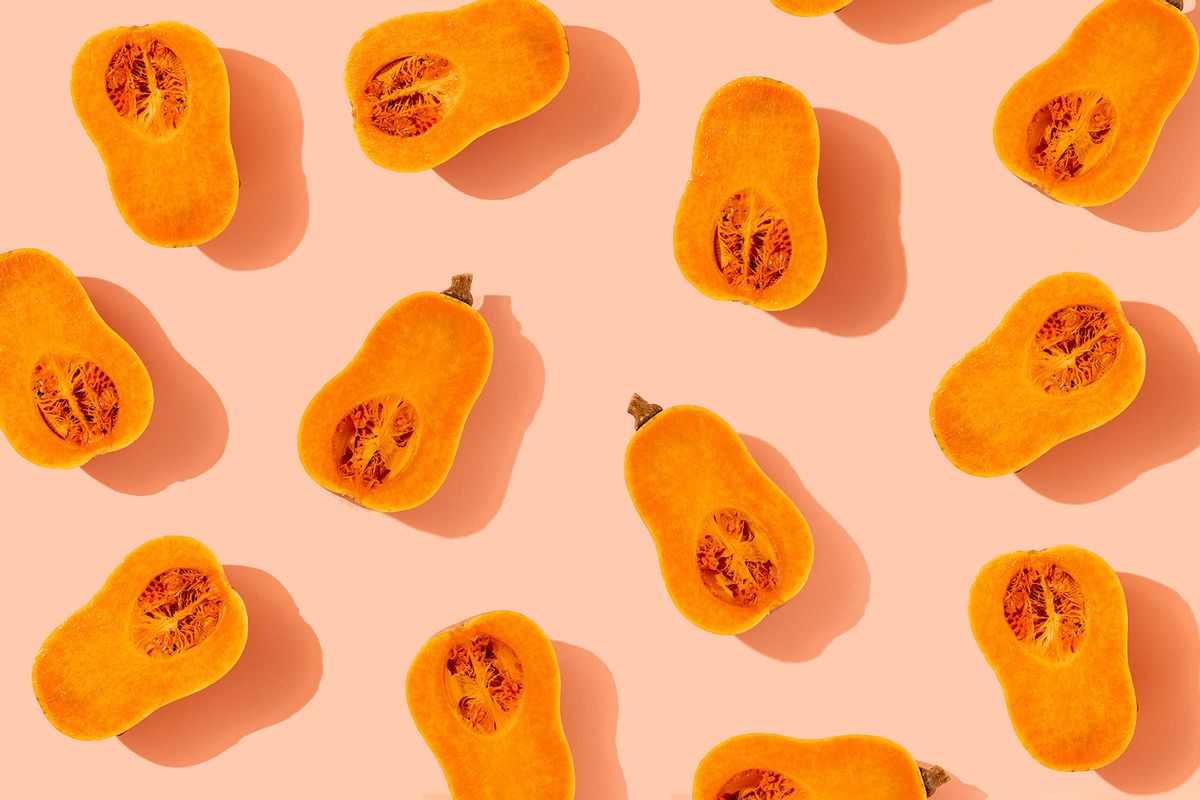Butternut squash: Everything you need to know about preparing fall’s consummate gourd

Admittedly, butternut squash is not my favorite. I’d simply opt for pumpkin, kabocha, pattypan, acorn or other seasonal gourds over butternut, truthfully. However, I know that this is not the case for the majority of the population who consume butternut squash with reckless abandon, decimating the world’s squash surplus every autumn and winter.
During culinary school, we were encouraged to do stages (pronounce with a French accent) or trials in restaurants kitchens in order to ascertain what we would like to do after graduation. Once upon a time, I staged at a super high-end Italian (surprise) restaurant, blocks from the Empire State Building. I was told to 1) watch garde manger (aka the appetizer/salad station chef) make salads and just stand there 2) cut an exorbitant amount of butternut squash. A chef heaped a monstrous, translucent tote filled to the brim with butternut squash into my arms and I heaved it over to the corner of the foreign kitchen. For an interminable amount of time, I cut butternut squash, staring at the wall as my hands turned a bright shade of orange. (No matter how I scrubbed, this shade didn’t subside for almost a week).
The history and appeal of butternut
One of (if not the most celebrated) primary winter squash, butternut is an absolute force throughout autumn and winter. A 2012 Saveur piece by Leah Koenig notes that “squash, which is a member of the cucurbit family along with melons and cucumbers, originally hails from the Americas — likely somewhere between Mexico and Guatemala.” Supposedly, though, the butternut itself wasn’t bred until the 1940s by a Massachusetts man named Charles Leggett, according to Bill Kerr at Farmer’s Weekly.
Since then, its become a widely embraced winter root vegetable, often gracing myriad soups throughout the colder months. However, cutting butternut squash is… not simple!
The skin is tough, the flesh is tough(er) and if you don’t have a substantial, super-sharp knife, it can be very (read: very) tricky to work with. It’s easy to get your knife stuck in a wonky part of the root vegetable, then struggle to remove it, then cut yourself, etcetera. It’s a laborious task, truly. The shape of the vegetable doesn’t help, so I often like to break the oblong vegetable into two shapes: the more circular “bottom” and then the elongated shaft. This can help make peeling and chopping easier.
Want more great food writing and recipes? Subscribe to Salon Food’s newsletter, The Bite.
I’ve already noted (scroll to #18) a wonderful usage of butternut squash, but it really is an amazingly customizable ingredient. Interestingly enough, it can be treated the same way you’d treat pumpkin, so it’s beguiling that butternut squash lattes or butternut squash spice never became “a thing.” But who knows: never say never? (I’d argue that sweet potato casseroles and sweet potato pie are somewhat butternut-adjacent, though).
A step-by-step breakdown of how to cut a “BNS”
Of course, the cutting process also depends on your end product. Making a puree? Do a general cubing and go to town. Roasting chopped squash or making soup? Same. Making stuffed squash boats? Simply cut in half lengthwise, scoop out the innards and peel — you’re good to go. Tweak this based on your final (butternut) destination and you should be all set.
Also, give yourself some time! Don’t rush this in hopes of getting dinner on the table ASAP. Have some patience; butternut can take a moment to prepare and going slowly will help reduce chances of hurting yourself, as well as make sure the squash is properly (and evenly) cut.
1. Ensure that your knife is egregiously sharp and rather heavy. I’m talking a pretty legitimate chef’s knife. You need both the weight and the sharpness in order to make your way through the vegetable. Flimsy, rickety little knives genuinely won’t do the trick here. Think more Valyrian steel, less delicate antique.
2. Lay the squash on your cutting board. Ensure the cutting board has some dampened paper towels underneath to help “rig” it into place; you don’t want your cutting board moving about while you’re cutting, or else that’s yet another prime manner in which you could cut yourself.
3. Cut off both the top and bottom “ends” of the squash.
4. Firmly and with a strong hand,, cut through the middle (or lower-middle) end of the butternut squash, separating the ‘bulbous base from the thinner, top component.
5. Peel the squash: this can be done with an uber-strong vegetable peeler, or — very carefully — you can use your sharp knife, gradually and gently turning the squash half as you make your way around it, gently slicing off as much of the peel and as little of the flesh as possible. (Conversely, switch up the order — if you think it’d be easier — and peel first, then hack the vegetable in half. Up to you! As I often like to say, it’s your kitchen.)
6. Halve the two pieces directly down the middle and scoop out all of the guts and seeds. Add them to a large bowl, fill with water and allow the seeds to rise to the top. These make a great snack when they’re roasted. Simply toss them with a bit of oil, some salt and whatever seasonings you like and/or have on hand, and roast at a medium-high temp. until they’re browned and fragrant.
7. From here, chop away! You can cut into large chunks or slices to make the chopping more manageable and then cut into smaller or even bite-size cubes. Depending on what you’re making, go with large cubes (soup, puree) or perhaps smaller ones (hash, roasted vegetables). Make your that your cubes are generally about the same size to ensure even cookery. Whatever is most convenient for you: from here, feel free to roast, boil, mash, steam, fry, or puree as you see fit.
Final takeaways
Butternut squash is also a wonderful double-or-triple duty dish: cut and roast a ton of squash, use some as a side dish, some in a breakfast hash and then puree the rest with some cream and stock before pureeing into a rich, velvety soup. Top with some of the roasted seeds, a bit of crumbled feta and a drizzle of high-quality olive oil and you’ll be more than pleased. In a slightly different iteration, butternut is also a novel vegetable for a unique dip.
Unsure what to do with your squash? Looking for some new ideas? Turn it into fries ala sweet potato, add thin slices to salads, throw it into macaroni and cheese, serve it with brown butter, stuff it, puree it and use it as a filling for a stuffed pasta, or enjoy it in risotto. Also, keep in mind that butternut can also operate in a sweeter or even outright dessert capacity, so don’t limit it strictly to only savory options and meals. It also holds up well to overt sweetness (i.e maple syrup), as well as sharper flavors (chipotle, pepper flakes, chiles), so it’s totally up to you to utilize the squash in whatever flavor profile might work best for you and yours. (It’s also really, really wonderful with a smooth, creamy cheese, such as goat.)
So, why not combine all of these things into one outrageous dish? Maybe maple-roasted butternut cubes over a spicy, pureed goat cheese dotted with chile? That sounds pretty stellar to me.
Read more
about this topic


